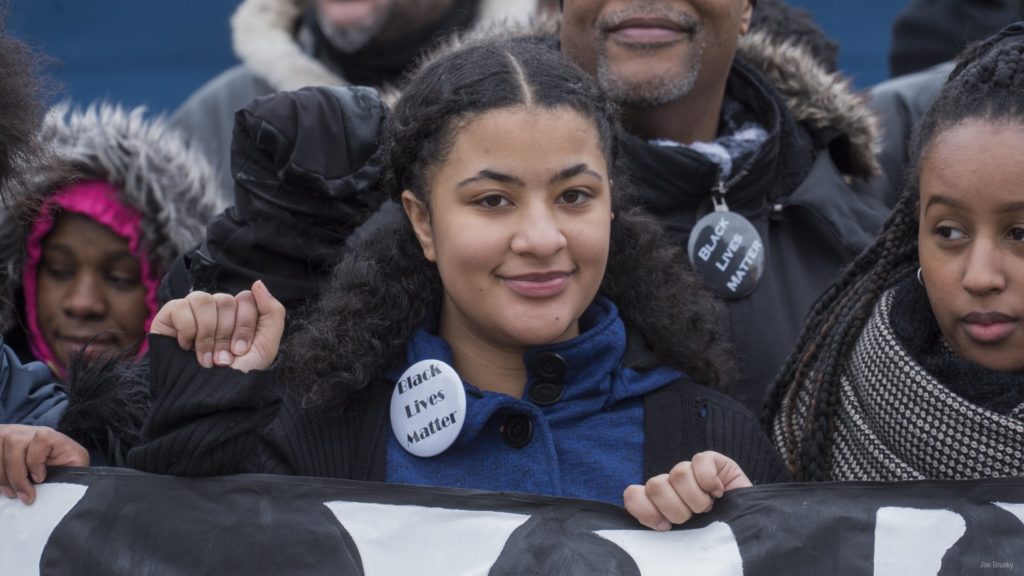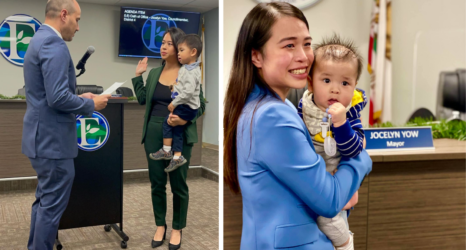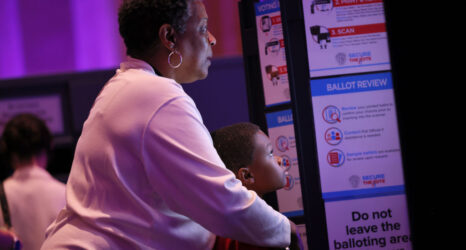In her testimony in front of the credentialing committee at the 1964 Democratic National Convention in Atlantic City, Fannie Lou Hamer articulated a sentiment that became a rallying cry for the marginalized: “I’m sick and tired of being sick and tired!”
In 2018, over 50 years later, Black women ran for elected offices at all levels of government because they too were “sick and tired of being sick and tired.” That year was marked by a historic number of women running for elected office, which many attributed to the outrage over the policies and conduct of the Trump administration. But as the Center for American Women and Politics (CAWP) report, Unfinished Business: Women Running in 2018 and Beyond, aptly points out, there is no single story of why women ran in 2018.
In my anecdotal conversations with Black women candidates last year, many shared the same broad reason for running: “The stakes are too high for me not to run.” But this sense of urgency and responsibility is not new. As the CAWP report states, “women of color have long fueled protest movements in moments of turmoil and change.” What we saw in 2018 was a concerted effort to increase the number of Black women who would be at the table to provide the inside application of the outside agitation—an attempt to fortify the firewall that would stop or at least slow down the rolling back of the last 50 years of progress.

As they say, luck is when opportunity meets preparation. For the 70 non-incumbent Black women who stepped off the sidelines to run for Congress in 2018, they saw the opportunities presented to make a substantial change in the make-up of our nation’s elected leadership as an opening they could not ignore. Win or lose, these candidates tapped into the mindsets of voters who were seeking a change to the status quo by, as the CAWP report suggests, “challenging gender and intersectional biases while campaigning, proving their power in disrupting instead of adapting to the prevailing rules of the game.” Though only five of these candidates were sworn into office in January of 2019, all of them contributed to a paradigm shift that will be felt for generations to come.
Black women stepped off the sidelines to run, channeling their inner Fannie Lou, with acknowledgement of the precarious tightrope that they must walk because of societal dictates of who can be angry and what is deemed an appropriate response to that anger. Women are generally considered “unhinged” or “out of control” if they express their anger, and the “angry Black woman” is seen as threatening and hostile. But in 2018, women refused to succumb to that antiquated mindset. Anger is a completely natural, and frankly necessary, human emotion.
Research shows that women run for public office because of an issue. They run to fix something, often times something that made them angry. Lauren Underwood (IL-14) ran because her representative voted to repeal of the Affordable Care Act after telling constituents at a town hall that he would not and she was furious. Lucy McBath (GA-6), mother of Jordan Davis, ran because, after the tragedy at Parkland, she could not let another family experience the anguish that she and so many others had because of senseless gun violence.
Ayanna Pressley (MA-7) stated at a rally to oppose Brett Kavanuagh’s Supreme Court confirmation: “I have been asked not to come off as outraged or angry for fear of being labeled as an angry Black woman. Well, I am angry and I am outraged because this is outrageous.” Each of these women in their own voices unabashadley proclaimed that they were “sick and tired of being sick and tired.”
These women, and other women running in 2018, demanded that the electorate rethink what they value in elected leaders. They also forced voters to think about the positive impact of having a less homogenous pool of candidates and leaders on the issues raised and decisions made in the halls of power. They challenged voters to not bring the voices that they represented to decision making tables. It was as if they dared voters to maintain the status quo.
Despite many voters being up for that challenge, the obstacles and barriers that women and particularly Black women, faced in 2018 were too much to overcome for the majority who ran. Intersectional biases that women candidates face due to race and gender are pervasive. Research has shown that women in general have to work harder to prove their viability. For Black women, this is nothing new.
As Rowan Pope reminds Olivia in ABC’s Scandal: “You have to be twice as good to get half of what they have.” That is a mantra that has been instilled into Black children by Black parents for generations: because of that reality, Black women candidates, more times than not, have stepped forward well-credentialed, with more leadership experience than their male colleagues only to have their capabilities questioned simply because they do not fit the white, male norm.
Party gatekeepers continue to be a substantial hurdle for women. The CAWP report notes that “from candidate recruitment and endorsements to strategic and financial support, parties can significantly affect candidates’ likelihood of electoral success.” Of the non-incumbent Black women who ran for Congress in 2018, none received major institutional or gatekeeper support until it was apparent that they would win their primaries or until they had actually won. This fact makes their wins even more remarkable and speaks to their self-determination on the campaign trail. Imagine if they had that support all along.
While some of the persistent hurdles to Black women’s political success remained in 2018, there were also events that helped propel Black women forward as candidates, empowering Black women to run and inspiring the electorate to look beyond status quo candidates and seek out voices that had not previously been at the table. The 24-hour news cycle brought the realities of #BlackLivesMatter, #SayHerName and #MeToo into the living rooms of millions of Americans.
For the Black women candidates of 2018, building a campaign in this environment ripe for change provided an advantage not felt by their predecessors. It was in this context that Black women, despite being just 7 percent of the U.S. population, were 17.5 percent of U.S. House nominees and 13.9 percent of freshman women in the House in 2019, providing a glimmer of hope that proportional representation for Black women could be within reach.

Black women have never been apathetic to the marginalization that their families and their communities face, to the marginalization that they face themselves. Their resolve to confront that marginalization fuels Black women’s political participation.
We saw that in 2018. We’ll see it again in 2020. As Black women continue to step off the sidelines and run at every level of government, we are very clear that there is much more work to be done to bring justice, equity and opportunity to our communities. We are also reminded that though we are “sick and tired of being sick and tired,” “you can pray until you faint,” as Fannie Lou Hamer told us, “but unless you get up and try to do something, God is not going to put it in your lap.”
That goes for all of us.





